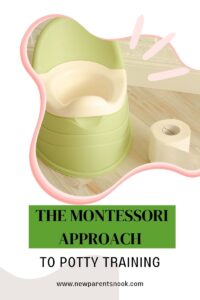Some links on our blog are affiliate links, meaning at no extra cost to you, we may earn a commission if you purchase through them. We participate in the Amazon Affiliate Program, and we recommend products we believe in. Your support helps us keep providing valuable content. Thank you!
In the realm of parenting, few topics stir as much debate as co-sleeping.
This practice, where parents share their bed with their child, is as old as humanity itself, yet it remains a polarizing issue.
Proponents argue that co-sleeping fosters a deeper bond between parents and their children, promotes easier breastfeeding sessions during the night, and can even help everyone get more sleep.
Critics, however, raise concerns about safety risks, the potential for creating bad sleeping habits, and the impact on a couple’s intimacy.
This blog post delves into the nuances of co-sleeping, examining the benefits, the risks, and how to do it safely, aiming to provide parents with the information they need to make an informed decision that best suits their family.
The Benefits of Co-Sleeping
- Emotional Bonding: Sharing a bed with your child can enhance the emotional connection between parent and child. It provides a sense of security and comfort to the child, knowing their parents are close by.
- Convenience for Breastfeeding: For breastfeeding mothers, co-sleeping can be incredibly convenient. It allows for easier feedings throughout the night, which can help maintain the milk supply and ensure the baby is fed without fully waking up the mother.
- Improved Sleep: Some families find that co-sleeping actually results in better sleep for everyone. Babies who sleep near their parents tend to wake up less often, and when they do, they are soothed back to sleep more quickly.
The Risks and Concerns
- Safety Concerns: The primary concern with co-sleeping is safety. There is an increased risk of SIDS (Sudden Infant Death Syndrome) and accidental suffocation if not done carefully and under the right conditions.
- Impact on Sleep Quality and Independence: Critics argue that co-sleeping can affect the child’s ability to develop healthy sleeping habits and become independent. It may also disrupt the parents’ sleep quality and their personal relationship.
Guidelines for Safe Co-Sleeping
- Create a Safe Sleeping Environment: Ensure the sleeping surface is firm, and keep pillows, blankets, and soft toys away from the baby to minimize the risk of suffocation.
- Be Mindful of Sleep Conditions: Adults should avoid substances that impair their ability to wake up (such as alcohol or sedatives) when co-sleeping. Ensure that all adults in the bed are aware of the baby’s presence.
- Consider a Co-Sleeper or Sidecar Arrangement: For those concerned about the risks but still wanting to keep their baby close, a co-sleeper or a crib attached to the side of the bed can be a safe compromise.
The Debate Continues
Despite the divided opinions, it’s clear that the decision to co-sleep is a personal one and varies greatly from one family to another. What works for one household may not work for another, and the choice often depends on a variety of factors including cultural beliefs, parenting styles, and personal comfort levels.
Co-sleeping is a practice steeped in tradition, comfort, and controversy. While it offers numerous benefits such as promoting bonding and breastfeeding, it also comes with its set of risks that cannot be ignored.
By understanding both sides of the argument and following guidelines for safe co-sleeping, parents can make a choice that best aligns with their family’s needs and values.
The most important aspect is to ensure the safety and well-being of the child, regardless of the sleeping arrangements.







